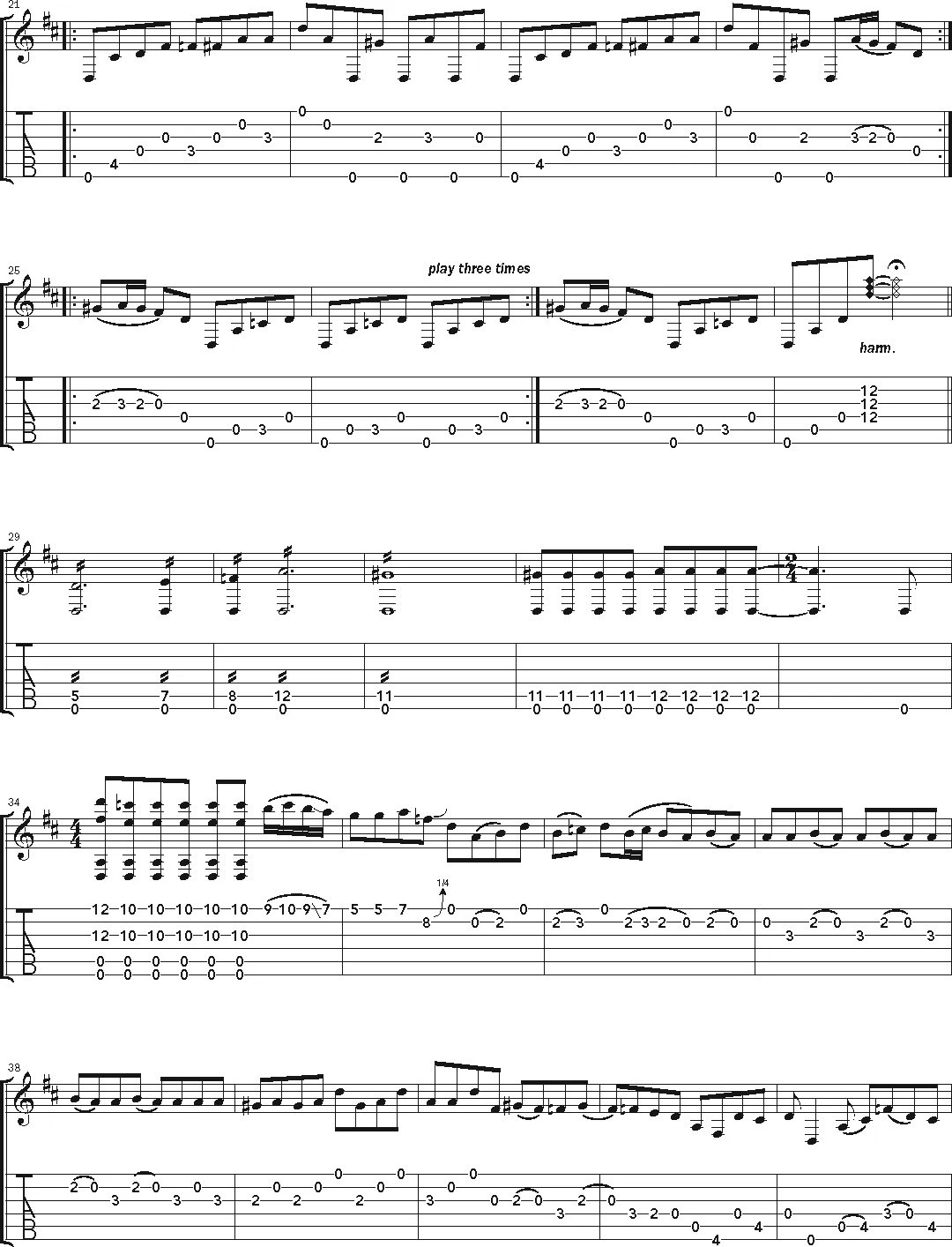Billy Strings, known for his innovative approach to bluegrass guitar, often draws inspiration from diverse musical traditions. In January 2019, after a studio session, Strings watched George Harrison: Living in the Material World, a documentary featuring Ravi Shankar and Indian music’s soulful depths. This experience sparked the creation of “Guitar Peace,” a track from his album Home, deeply rooted in exploring unique guitar string techniques and tunings.
The day after watching the documentary, the echoes of Shankar’s music still resonated with Strings. Back in Blackbird Studio, while his collaborators took a break, he picked up a vintage 1940s Martin 000-28. “I told our engineer [Glenn Brown] just to leave the tape rolling,” Strings recounts. He then tuned the guitar to an open D variation, embraced the altered string tension and sonic possibilities, and with the help of some cannabis, entered a creative flow state.
 Billy Strings Guitar Peace music notation sheet 2
Billy Strings Guitar Peace music notation sheet 2
With Brown adding drone-like textures on a harmonium, Strings improvised for four minutes, experimenting with various right-hand techniques on the guitar strings. He employed tremolo picking for sustained, shimmering sounds, cross-picking to create intricate rhythmic patterns across the strings, and string skipping to jump between non-adjacent strings, generating unexpected melodic leaps. He shifted between free-flowing timing and a more structured rhythmic feel, driven purely by instinct and a desire to explore uncharted sonic territories on the guitar. “I don’t even know what I was thinking; I just wanted to play from my soul, make something up on the spot, and find weird things that worked. It was a total experiment,” Strings explains. The later addition of a Buchla synthesizer further enhanced the track’s otherworldly atmosphere.
To delve into “Guitar Peace” and its string-centric techniques, you’ll first need to retune your guitar to open D. This involves lowering the 1st and 2nd strings a whole step down to D, and the 3rd string a half step down to F#. This altered tuning dramatically changes the landscape of the fretboard and the relationship between the strings, opening up new sonic possibilities and chord voicings. Spend some time familiarizing yourself with this tuning, exploring how chords and melodies respond to the changed string tensions and intervals before tackling the song itself.
 Billy Strings Guitar Peace music notation sheet 4
Billy Strings Guitar Peace music notation sheet 4
The main riff, appearing in bars 13–16 of the transcription, serves as the foundation of “Guitar Peace.” Notice the absence of chord changes, creating a harmonically static environment that emphasizes melodic and rhythmic exploration on the guitar strings. The inclusion of the raised fourth (G#) imparts a distinct Indian flavor, echoing the inspiration from Ravi Shankar’s music. Focus on achieving a consistent and clean picking hand technique, whichever combination of upstrokes and downstrokes feels most natural to you. Allow the notes to resonate together, creating a rich, sustained texture. In bar 14, be mindful when switching between the sixth and third strings to avoid unintentionally striking the strings in between, maintaining clarity and precision in your string work.
Once you’ve mastered the main riff at tempo, venture into its variations, such as those found in bars 17–20 and 25–28. These sections introduce techniques like pull-offs and harmonics, further expanding the sonic palette and demonstrating the versatility of string manipulation within the open D tuning. Pay attention to any phrases or nuances that particularly capture your ear and try to incorporate them into your playing.
Ultimately, to truly embody the spirit of “Guitar Peace,” improvisation is key. Billy Strings himself encourages players to “Just try to reach into your heart and play what you feel. Play your guitar as if you’re humming a melody.” This approach emphasizes the expressive potential of the guitar strings as a conduit for emotion and musical storytelling. By understanding the foundational techniques and embracing the freedom of improvisation, you can unlock your own “Guitar Peace” and explore the vast landscape of sounds available through the Strings Of A Guitar.

